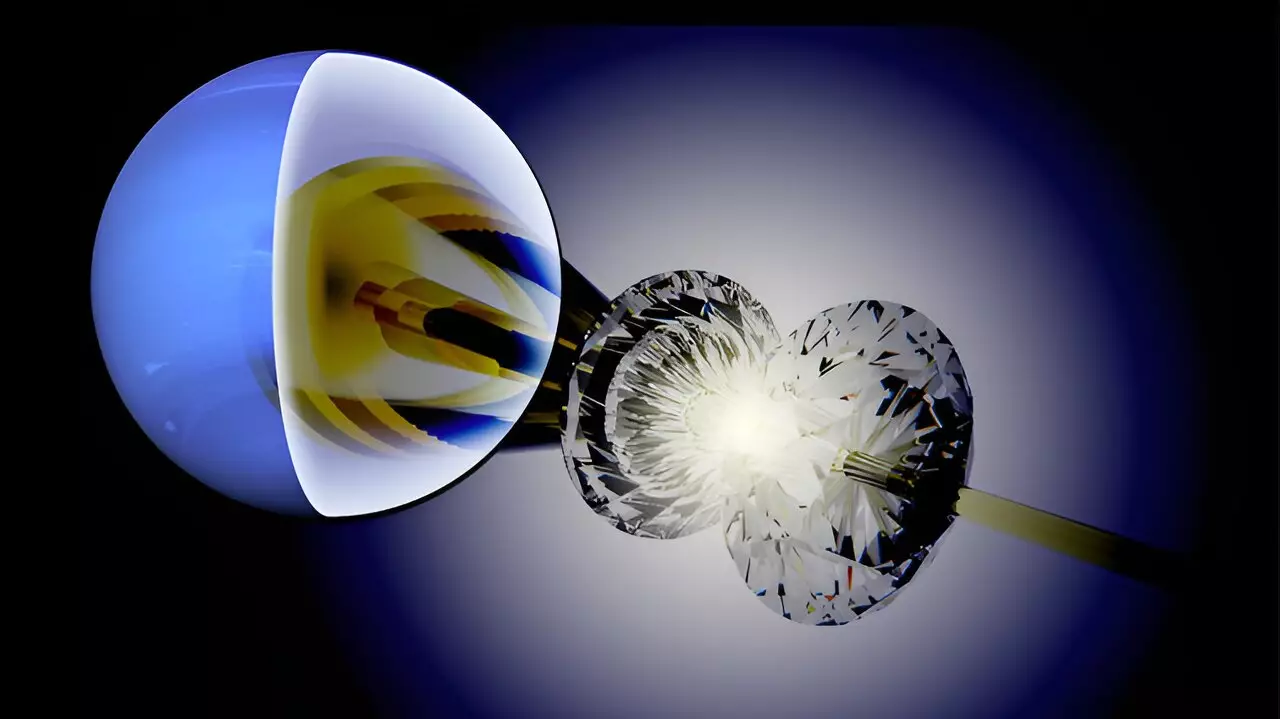The recent publication in the Journal of Applied Physics by a team of scientists from Lawrence Livermore National Laboratory (LLNL), Argonne National Laboratory, and Deutsches Elektronen-Synchrotron introduces a new sample configuration that enhances the reliability of equation of state measurements in previously unattainable pressure regimes within the diamond anvil cell. Achieving high-quality static equation-of-state measurements above 5 million atmospheres enables researchers to explore pressure conditions similar to those found in Neptune’s interior. This innovative sample development represents a significant advancement in the field of condensed-matter sciences, particularly in static compression experiments exceeding 300 GPa.
The compression environment for static compression experiments at such high pressures is often far from ideal and poses substantial challenges to researchers. The development of this new sample package addresses these challenges by providing an improved compression environment that ultimately enhances the quality of equation of state data. By advancing sample fabrication techniques, scientists can now conduct more complex experiments and garner a better understanding of material behaviors under extreme pressure conditions.
The LLNL-designed toroidal diamond anvil cell serves as a pivotal tool in enabling researchers to reach pressures exceeding 300 GPa, with a sample chamber diameter on the order of 6 micrometers. This small sample chamber allows for precise microfabrication of sample packages using a 10-step process. By embedding the target material in a uniform capsule of soft metal, which acts as a pressure-transmitting medium, researchers can ensure that stress is distributed uniformly around the sample material during compression. This uniform stress distribution is essential for obtaining reliable equation-of-state measurements.
The experiments conducted at Argonne National Laboratory Sector 16 HPCAT and Deutsches Elektronen-Synchrotron PETRA-III involved testing the new sample package methodology on molybdenum with a copper pressure-transmitting medium. The results of these experiments demonstrate the effectiveness of the sample-encapsulation method in facilitating static equation of state calibrations in various disciplines, including physics, chemistry, and planetary science materials. The researchers anticipate that this methodology will pave the way for further advancements in static compression data analysis at multi-megabar conditions.
LLNL scientist Claire Zurkowski, the first author of the paper, emphasizes that this work represents only the beginning of sample-package microfabrication in the toroidal diamond anvil cell. The potential applications of this sample-encapsulation method are vast, with the capacity to push static equation of state calibrations into the multi-megabar range. This is particularly crucial in fields where static compression data is currently limited, showcasing the importance of ongoing advancements in high-pressure equations of state measurements.
By continually innovating sample fabrication techniques and experimental methodologies, researchers can expand our understanding of materials under extreme pressure conditions and contribute to advancements in various scientific disciplines. The collaboration between institutions like LLNL, Argonne National Laboratory, and Deutsches Elektronen-Synchrotron exemplifies the power of interdisciplinary research in driving scientific progress.


Leave a Reply